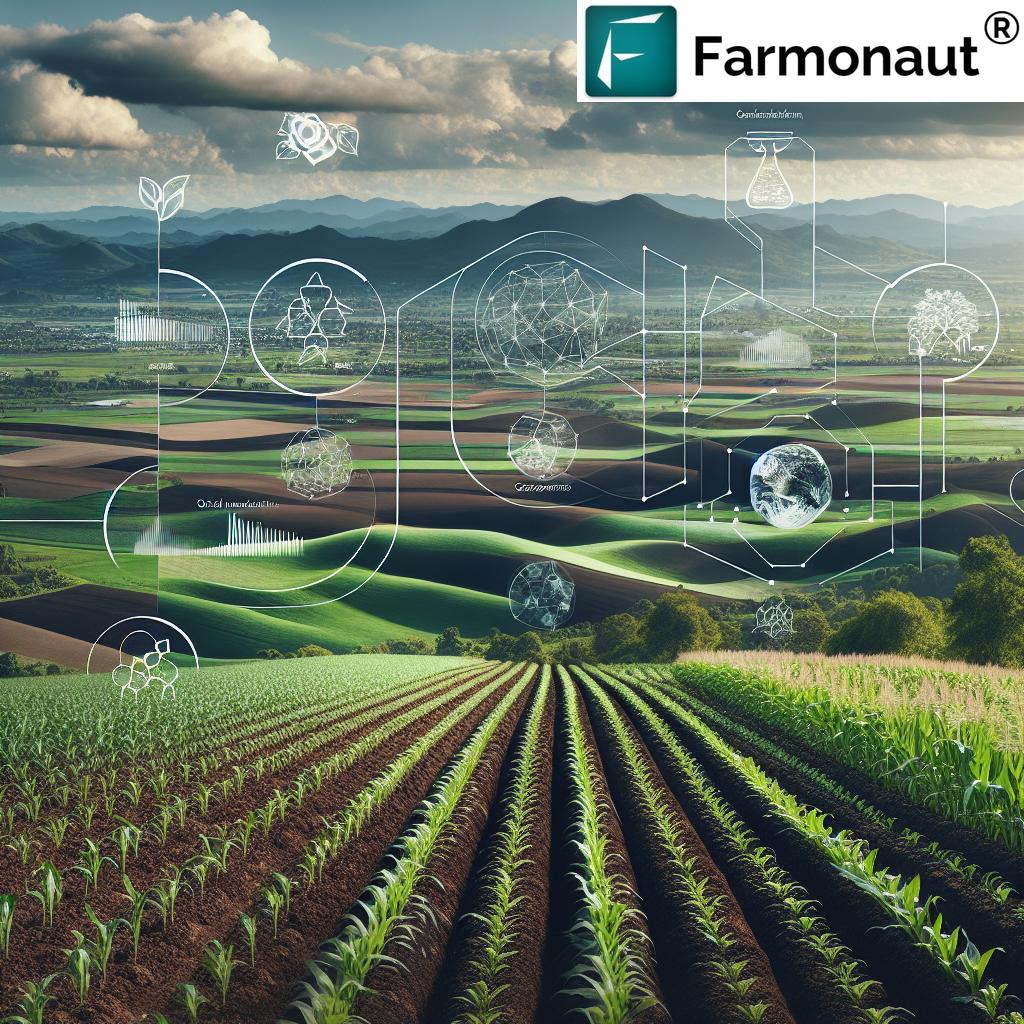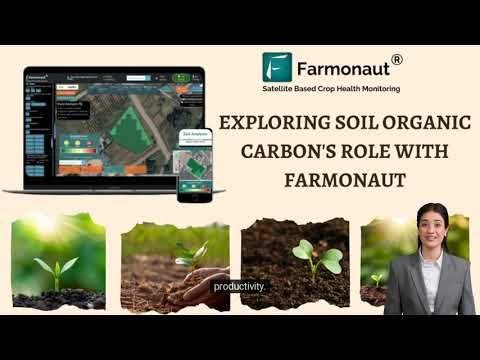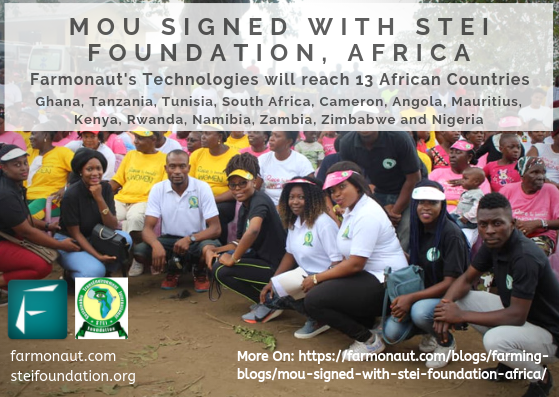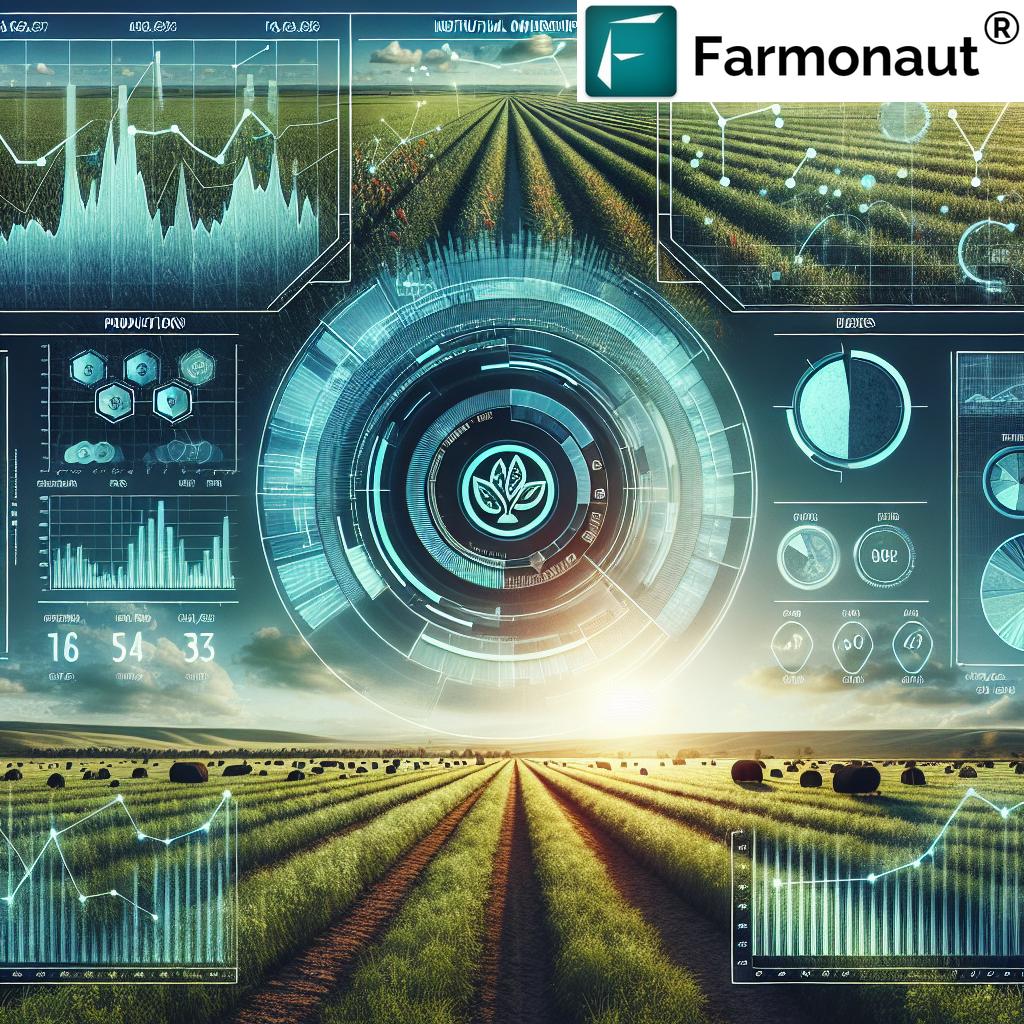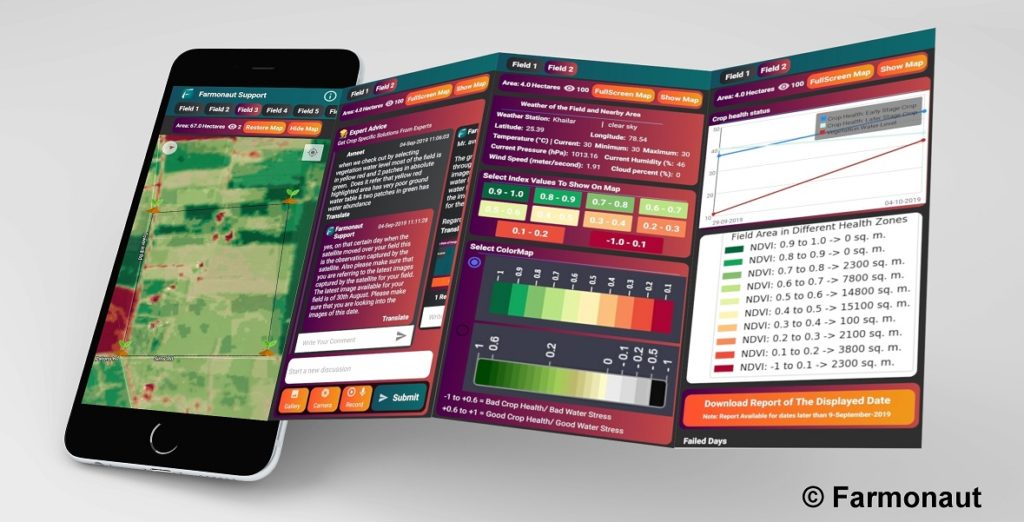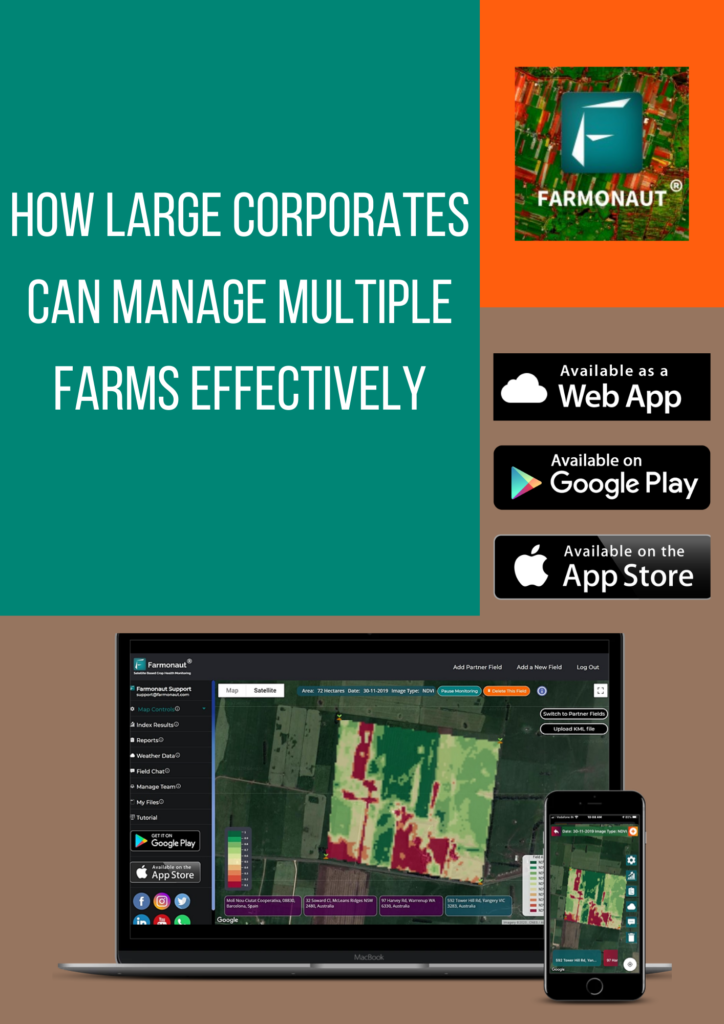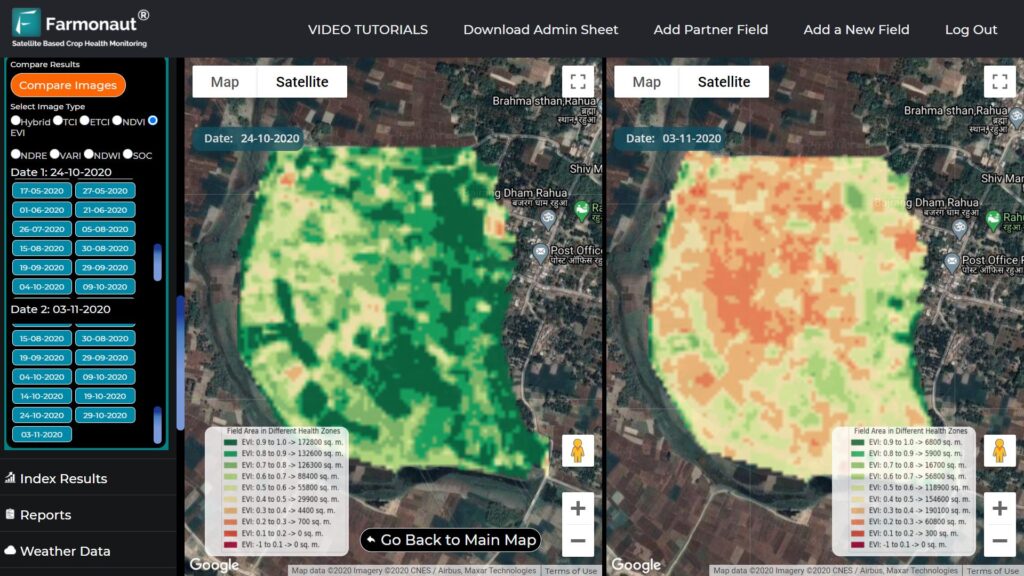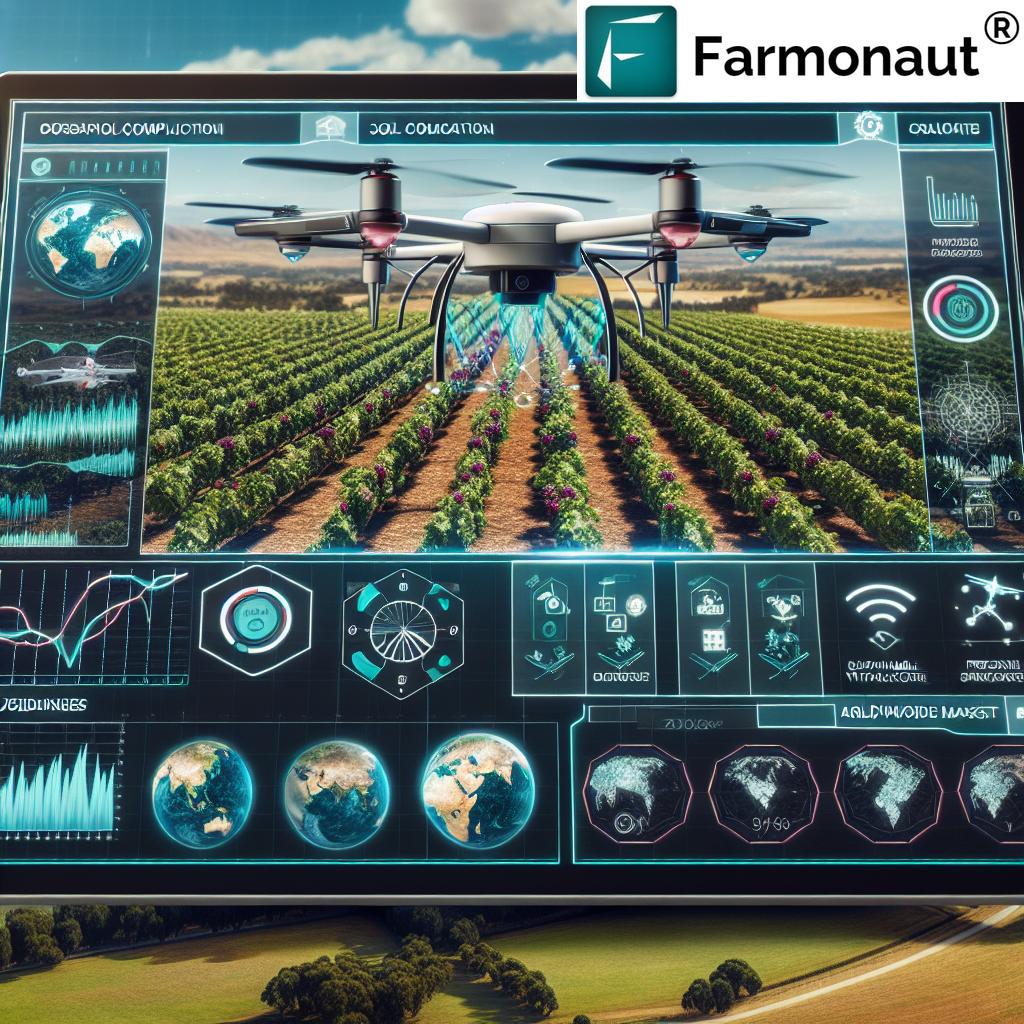Regenerative Agriculture Market Growth: 7 Powerful Trends for 2025
“The regenerative agriculture market is projected to grow at a CAGR of 14% globally by 2025.”
Table of Contents
- Introduction: Regenerative Agriculture as a Global Solution
- What is Regenerative Agriculture?
- Regenerative Agriculture Market Overview and Growth
- 7 Powerful Trends Shaping Regenerative Agriculture Market Growth
- Comparison Table: Top 7 Regenerative Agriculture Trends 2025
- Key Market Drivers: From Sustainability to Economics
- Challenges and Opportunities in Regenerative Agriculture
- Innovation and the Role of Technology in Regenerative Farming
- How Farmonaut Empowers the Regenerative Agriculture Movement
- The Future Outlook: Regenerative Agriculture and a Sustainable World
- FAQ: Regenerative Agriculture Market Growth
- Resources & Further Reading
Introduction: Regenerative Agriculture as a Global Solution
As climate change, soil degradation, and the quest for robust food security intensify, regenerative agriculture has emerged as a powerful approach to sustainable farming. This movement is not just about tweaking old agricultural methods; it is about reversing damage, restoring ecosystems, and fostering a resilient global food system.
Over the last decade, the world has witnessed our agricultural practices reach a critical crossroads. For centuries, conventional agriculture has prioritized yield, often at the expense of natural resources and the wider environment. However, the escalating impacts of climate change and soil fertility decline have sparked a global movement toward more regenerative, sustainable methods.
This blog post explores the dynamic regenerative agriculture market growth, focusing on the 7 major trends projected to drive change in 2025. We’ll look at pivotal drivers, opportunities, and the role of advanced platforms like Farmonaut, which uses cutting-edge technology to make these transitions accessible and more effective for farmers worldwide. Let’s begin our regenerative journey!
“Over 60% of farmers adopting regenerative practices report improved soil health within the first three years.”
What is Regenerative Agriculture?
Regenerative agriculture describes a suite of practices designed not only to sustain, but also to regenerate the land. It encompasses methods that rebuild soil organic matter, enhance biodiversity, and restore degraded ecosystems at both farm and landscape scales. Unlike methods that can deplete resources or simply “do less harm,” regenerative techniques actively improve the farm environment year after year.
Key Principles of Regenerative Agriculture
- Minimal soil disturbance via reduced tillage practices
- Organic soil management and fertility improvement without synthetic chemicals
- Diverse crop rotations and intercropping for enhanced resilience
- Managed grazing systems that integrate livestock with cropping
- Maintaining living root systems year-round for carbon capture
These practices collectively drive soil health improvement, boost yields, and enhance a farm’s ecosystem services—delivering meaningful impacts for both farmers and the planet.
Regenerative Agriculture Market Overview and Growth
The regenerative agriculture market is experiencing unprecedented expansion. MarketsandMarkets research places the global market value at USD 8.7 billion in 2022, projected to nearly double to USD 16.8 billion by 2027—following an impressive CAGR of 14.0%.
What are the core drivers of this remarkable growth?
- Surging consumer demand for sustainable products
- Corporate commitments to environmental sourcing and sustainability
- Government incentives rewarding carbon sequestration in agriculture
- Awareness of soil health and ecosystem restoration
- Farmer motivation to reduce inputs, improve yields, and boost economic benefits
As these forces converge, both developed and developing regions—especially North America (with the United States at the forefront), Europe, India, Brazil, and Argentina—see rapid adoption of regenerative systems.
Regenerative Agriculture: Market Segmentation
- Practice Types: Agroecology, Agroforestry, Silvopasture, No-Till & Pasture Cropping, Biochar & Terra Preta, Holistically Managed Grazing, and Aquaculture
- Main Applications: Row crops, permanent crops, grazing lands, integrated livestock systems
- Geographical Regions: America (especially the United States), Europe, Asia-Pacific, and Latin America
- Farmonaut Carbon Footprinting: Track and reduce your farm’s environmental impact with real-time carbon emission data, supporting compliance and sustainability efforts in regenerative systems.
- Farmonaut Product Traceability: Guarantee transparency in agricultural supply chains with blockchain-based solutions, vital for meeting consumer demands and certification in regenerative markets.
- Farmonaut Crop Loan and Insurance Verification: Leverage satellite verification to streamline agricultural financing and insurance processes, improving access and lowering fraud.
- Farmonaut API Access: Integrate robust crop & weather satellite data into your systems or apps. See developer docs.
- Farmonaut Large-scale Farm Management: Optimize large operations and improve farm productivity with advanced, real-time analytics and resource tools for regenerative agriculture.
7 Powerful Trends Shaping Regenerative Agriculture Market Growth
Let’s explore the seven biggest trends propelling regenerative agriculture market growth and transforming the sustainability landscape for farmers worldwide in 2025:
-
1. Soil Health Improvement as a Core Market Driver
Soil health improvement stands at the heart of the regenerative movement. Healthy soils are vital for carbon storage, water retention, and sustainable food production. In 2025, soil management will remain a central practice—utilizing cover crops, reduced tillage, composting, and the encouragement of beneficial microorganisms to restore fertility and reverse degradation.
-
2. Carbon Sequestration in Agriculture and Ecosystem Restoration
With increasing climate change pressures, carbon sequestration in agriculture has become both a market imperative and an opportunity. Practices such as agroforestry, holistic grazing, and perennial cropping lock carbon into farmland soils and vegetation. Carbon-credit frameworks are creating new revenue streams, making environmental services directly profitable for progressive farmers.
-
3. Diversification via Crop Rotation and Agroforestry Systems
Crop diversity is fundamental for ecosystem resilience. By rotating crops and integrating trees and shrubs (agroforestry), regenerative farms can suppress pests, reduce disease, increase yields, and boost overall system productivity. Diversification is increasingly tied to economic benefits and farm security.
-
4. Livestock Integration and Managed Grazing
Regenerative grazing—where livestock are rotationally managed—enriches soil organic matter and grassland biodiversity. In 2025, combining animals with cropping will gain momentum, delivering ecological and economic outcomes far beyond those realized by monocultures.
-
5. Technology-Driven Innovation & Data for Decision-Making
The adoption of precision agriculture technologies enables superior resource management, real-time monitoring, and knowledge-driven optimization. Satellite-based platforms like Farmonaut democratize access to AI advisory and data analytics, supporting a smooth transition to regenerative systems for farms of all types and sizes.
-
6. Certification & Supply Chain Traceability on the Rise
In response to escalating consumer and market demands, regenerative agriculture certification standards and blockchain-based traceability solutions are being rapidly developed. These frameworks help distinguish genuine regenerative products, command premiums, and guarantee transparency from farm to fork.
-
7. Financial Incentives & Corporate Sustainability Commitments
The business case for regenerative agriculture is growing, fueled by financial incentives (carbon credits, government support) and leading food companies pledging to source ingredients from regenerative systems. Corporate commitments are creating huge market pull, further accelerating the transition.
Comparison Table: Top 7 Regenerative Agriculture Market Trends for 2025
| Trend Name | Estimated Global Market Impact (2025) | Soil Health Benefit | Sustainability Value | Economic Benefit for Farmers | Environmental Impact |
|---|---|---|---|---|---|
| Soil Health Improvement | USD 5.2 Billion (Core driver in 60%+ of projects) |
High | Water retention, nutrient cycling | Yield increase (up to 20%) |
Biodiversity restoration |
| Carbon Sequestration in Agriculture | USD 2.6 Billion (Growing 18% CAGR) |
High | Carbon reduction, climate change mitigation | New revenue via carbon credits | Direct greenhouse gas (GHG) reduction |
| Crop Diversification (Agroforestry & Rotation) | USD 1.9 Billion | Moderate-High | Resilience to weather & pest pressures | Yield stability; input savings 10-15% | Higher wildlife habitat |
| Livestock Integration & Managed Grazing | USD 1.3 Billion | High (especially in grasslands) | Improved soil fertility, organic matter | 20-30% lower supplement costs | Enhanced carbon storage, grassland health |
| Technological Innovation & Data Management | USD 2.8 Billion (Satellites, AI, IoT) |
Moderate | Resource efficiency, precision applications | Input costs reduced 15-35% | Reduced chemical leaching, emissions |
| Certification & Traceability Systems | USD 1.1 Billion | Moderate | Transparency, consumer trust, market premiums | Market access, higher prices | Reduced fraud; better supply chain oversight |
| Financial Incentives & Corporate Commitments | USD 1.9 Billion | Indirect—via adoption rates | Drives global adoption | Lower input risk; contract guarantees | Corporate GHG reductions |
Key Market Drivers: From Sustainability to Economics
The rapid expansion of the regenerative agriculture market is underpinned by several strategic drivers beyond environmental awareness:
-
Economic benefits for farmers:
Transitioning to regenerative systems often leads to lower input costs (less synthetic fertilizer/pesticide use, reduced fuel), improved crop yields and higher net profits—especially after the early transition phase. -
Corporate sustainability commitments:
Leading food and beverage companies (e.g. General Mills, Danone, Nestlé, Unilever) are pledging and investing billions to source ingredients from regenerative farms, creating strong market demand and security for producers. -
Carbon credit markets & ecosystem service payments:
New financial mechanisms reward ongoing ecological stewardship. Carbon credits from soil and biomass sequestration can now be sold, creating a direct business case for climate change solutions in agriculture. -
Growing consumer awareness:
Modern consumers seek products with clear sustainability credentials. Regenerative products, with their environmental and social benefits, frequently command higher prices and enjoy premium market access.
Affordable Precision Agriculture for All:
Curious about transforming your farm’s productivity and sustainability? Discover Farmonaut’s affordable subscription plans below and unlock the future of data-driven, regenerative farming:
Challenges and Opportunities in Regenerative Agriculture
Despite the extensive benefits and meteoric market growth, regenerative agriculture still faces substantive challenges that, if overcome, could lead to even greater opportunities:
- Knowledge and technical barriers: Not all farmers have access to reliable information or training for successful regenerative transitions. This highlights a major opportunity for investment in extension services and education.
- Lack of universal certification standards: While organic farming has clear global certification, regenerative agriculture lacks universally accepted standards—though frameworks are evolving.
- Supply chain and infrastructure hurdles: Shifting established agricultural supply chains to accommodate regenerative products will require time, capital, and coordination among multiple actors.
- Measurement & verification: Robustly quantifying ecosystem benefits (such as carbon sequestration) remains technically complex and resource-intensive. Technological advances and digital monitoring must continue to evolve.
Through deliberate collaboration among researchers, technologies like satellites and AI, and forward-thinking farmers, these barriers are steadily being dismantled.
Innovation and the Role of Technology in Regenerative Farming
The future of regenerative agriculture will be shaped by our ability to innovate—blending the wisdom of natural systems with advanced digital tools for everyday decision-making. Leading this charge are platforms like Farmonaut, which democratize access to precision agriculture via real-time satellite monitoring, AI advisory, carbon tracking, and blockchain traceability.
Innovations include:
- Satellite-based crop monitoring: Instantly assess crop health, soil moisture, and yield potential from anywhere (Farmonaut Crop Advisory App).
- AI-driven management tools: Tailored advice on best agronomic practices in real time.
- Blockchain traceability: End-to-end, transparent product traceability that builds consumer trust and authenticates regenerative claims (see more).
- Carbon footprinting: Monitor emissions, qualify for carbon credits, and validate environmental impact (details here).
How Farmonaut Empowers the Regenerative Agriculture Movement
At Farmonaut, we believe advanced technology should be both affordable and empowering for every farmer, agribusiness, and policymaker driving the regenerative transition:
- Satellite-Based Farm Management: With multispectral images, our platform delivers real-time insights on crop vigor, soil moisture, and field variability—critical for optimizing regenerative practices and resource use.
- AI-Based Advisory (Jeevn): Our Jeevn system brings expert crop management, weather forecasts, and personalized advice directly to users—helping guide every phase of regenerative agricultural production.
- Blockchain Traceability: By documenting the physical & digital journey of farm products, we help regenerative farmers capture value and prove authenticity to buyers and consumers.
- Resource & Fleet Management: We provide logistics oversights, ensuring that large and small farms alike maximize labor, machinery, and energy—crucial for sustainable, profitable operations.
- Carbon Footprint Tracking: Our tools make it easier than ever to measure, report, and improve your environmental impact through real-time emissions data.
- Accessible API & Apps: With both web, mobile, and API access, Farmonaut delivers quality insights at scale. Whether you’re a solo farmer in India or managing multinational operations across America and Europe, our platform scales with your vision.
Learn more about Farmonaut’s crop advisory, carbon tracking, and traceability solutions:
- Explore the Farmonaut App
- Farmonaut Carbon Footprinting
- Farmonaut Product Traceability
- Farmonaut Crop Loan & Insurance
The Future Outlook: Regenerative Agriculture and a Sustainable World
The regenerative agriculture market stands at a pivotal moment. Beyond economic opportunity, it embodies a hope-filled vision: that by nurturing soil health and ecosystem vitality, we can reverse degradation and restore balance between human food needs and environmental stewardship.
As farmers, investors, and consumers align around sustainability, regenerative systems promise profound benefits: resilient yields, reduced input costs, improved climate mitigation, and thriving rural economies. The market’s expansion mirrors a broader societal shift—recognizing that restoring the natural systems sustaining us is both urgent and possible.
With technology platforms like Farmonaut lighting the way, let’s collectively build a food system that is not only profitable but also restorative—offering abundance for generations to come.
Frequently Asked Questions (FAQ): Regenerative Agriculture Market Growth
1. What is regenerative agriculture?
Regenerative agriculture encompasses farming and grazing practices that rebuild soil organic matter, restore degraded biodiversity, and reverse resource depletion, resulting in resilient farms, improved yields, and enhanced ecosystem services.
2. What are the key market growth projections for regenerative agriculture?
The global regenerative agriculture market is estimated to reach USD 16.8 billion by 2027, nearly doubling in five years, with a projected compound annual growth rate (CAGR) of 14%.
3. How do regenerative agriculture practices benefit farmers?
Farmers can experience higher net returns through lower input costs (due to reduced synthetic fertilizer and pesticide usage), enhanced soil health, increased yields, and revenue streams from carbon credits and premium markets.
4. What challenges does the regenerative agriculture market face?
Barriers include lack of knowledge and technical support for farmers, absence of universal certification standards, supply chain adaptation, and difficulties in quantifying carbon sequestration and ecosystem gains. Advanced technology and collaboration are key to overcoming these hurdles.
5. What role do technology platforms like Farmonaut play in the market growth?
Farmonaut empowers farmers with affordable, real-time crop monitoring, AI-driven advisories, blockchain traceability, and carbon footprinting. These tools support more informed, efficient, and sustainable decisions, making regenerative farming accessible to all scales and geographies.
6. How can I access Farmonaut’s solutions?
You can use Farmonaut’s apps on Android, iOS, or web, or integrate satellite data via Farmonaut’s API.
7. What resources support a successful transition to regenerative agriculture?
Resources include extension services, hands-on training, digital support tools like Farmonaut’s AI advisories and satellite analytics, and participation in emerging market and incentive programs.
Resources & Further Reading
- Farmonaut Carbon Footprinting Service – For tracking and verifying carbon sequestration in agriculture
- Farmonaut Product Traceability – For blockchain-based transparency in supply chains
- Farmonaut Large-Scale Farm Management – For managing extensive regenerative operations
- Download Regenerative Agriculture Market PDF Brochure
- Farmonaut Regenerative Farming App
- Farmonaut Satellite & Weather API
- API Developer Documentation


